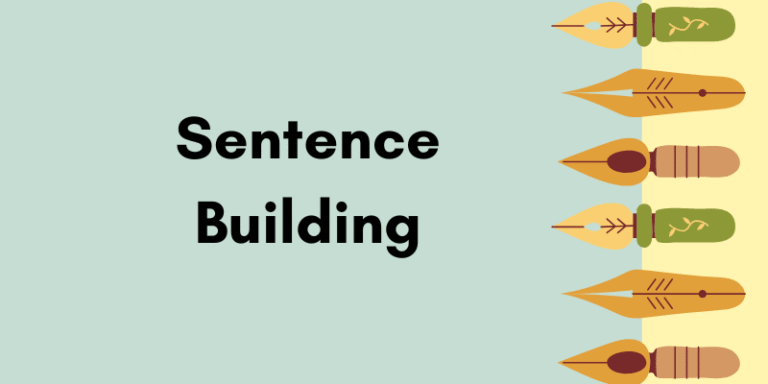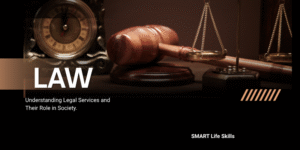Sentence building is one of the fundamental skills in academic writing. A well-constructed sentence enhances clarity, coherence, and precision, while poorly constructed sentences can obscure meaning and weaken arguments. In higher education, students are expected to demonstrate mastery in constructing sentences that convey complex ideas with accuracy (Cottrell, 2013).
Developing sentence-building skills requires an understanding of grammar, syntax, vocabulary, sentence variety, and cohesion. It also involves critical thinking to ensure that meaning is expressed clearly and effectively in academic contexts (Moon, 2004). This article explores the importance of sentence building, common challenges, strategies for improvement, and practical examples from research and academic writing practice.
1.0 Importance of Sentence Building in Academic Writing
Sentences are the basic units of thought in written communication. In university assignments, they serve as vehicles for arguments, evidence, and analysis. As Rahman (2025) notes, many undergraduate students struggle with sentence construction errors, including incorrect verb usage, subject–verb disagreement, and misplaced modifiers. Such errors undermine the credibility of academic writing.
Moreover, Lahoual and Hdouch (2025) emphasise that complex sentence construction is associated with higher levels of writing proficiency. For example, a student who writes:
- “The theory is important. It is used in business.” demonstrates simplicity but lacks sophistication.
- Whereas: “The importance of this theory lies in its application across diverse business contexts, particularly in shaping strategic decision-making,” shows complexity and academic maturity.
2.0 Challenges in Sentence Building
Grammatical Errors
Research by Rahman (2025) in Bangladesh reveals that engineering students frequently commit errors in verb forms, prepositions, and sentence structure, suggesting a lack of foundational grammar knowledge. Similarly, Chuanpipatpong (2025) found that Thai EFL students often struggled with syntax and word order, impacting the quality of their argumentative essays.
Overuse of Simple Sentences
According to Maghfirah et al. (2025), many learners over-rely on simple sentences, leading to repetitive and monotonous writing. Academic writing often demands a balance of simple, compound, and complex structures to maintain reader engagement and convey nuanced meaning.
Influence of First Language (L1)
Rafieyan (2025) observed that students’ first language strongly influences sentence formation in a second language (L2). For instance, learners may transfer structures directly from their native language, resulting in awkward or ungrammatical constructions in English.
3.0 Strategies for Effective Sentence Building
Mastery of Grammar and Syntax
Grammar is the foundation of sentence building. As Nuryani and Rohmat (2025) note, words in sentences influence one another, and understanding grammatical relationships ensures accuracy. For example, subject–verb agreement (“The students are working” vs “The students is working”) is essential to maintain precision.
Sentence Variety
Effective academic writing requires varying sentence types:
- Simple sentences convey direct information.
- Compound sentences join related ideas: “The results were significant, and they confirmed the hypothesis.”
- Complex sentences introduce depth: “Although the results were significant, further research is needed to confirm the hypothesis.”
By combining sentence types, writers improve the rhythm and readability of their work (Williams, 2025).
Use of Transition Words and Cohesion
Transitions such as however, therefore, in contrast, and furthermore link ideas, ensuring cohesion. Sukmawati (2025) found that students using digital writing assistants such as ChatGPT or Grammarly improved cohesion by generating clearer sentence structures and logical connectors.
Feedback and Peer Review
Lahoual and Hdouch (2025) highlight the value of peer feedback in improving complex sentence construction. When students review one another’s work, they learn alternative ways of phrasing and structuring ideas, enhancing their own writing.
4.0 Role of Technology in Sentence Building
Digital tools have transformed how students build sentences. According to Anwar et al. (2025), applications such as Grammarly refine sentence accuracy, suggest alternatives, and encourage variety. Similarly, Maghfirah et al. (2025) found that QuillBot helps students balance precision and personal voice by rephrasing sentences while preserving meaning.
However, as Pedersen (2025) warns, over-reliance on AI can reduce students’ ability to think critically about sentence construction. Tools should be seen as support systems, not replacements for independent skills.
5.0 Practical Applications in Higher Education
Academic Essays
In essays, sentence building reflects the ability to construct arguments logically. For example, instead of writing:
“The study is about climate change. It is dangerous.”
a stronger version would be:
“This study critically examines climate change as a global threat, highlighting its profound environmental, economic, and social implications.”
Reports and Dissertations
Dissertation writing often requires precision in presenting data. Pourgholamali (2025) argues that maintaining sentence order and semantic fidelity is vital in research summaries, especially in fields such as medicine or engineering, where misrepresentation can distort findings.
Language Learning
Research by Reducto and Idul (2025) shows that individualised feedback and technology-enhanced instruction improve students’ sentence construction in EFL contexts, helping them transition from simple to more sophisticated academic writing.
6.0 Case Studies
- Morocco: Lahoual and Hdouch (2025) found that EFL students improved their use of complex sentences through structured peer feedback, which encouraged active reflection on syntax.
- Bangladesh: Rahman (2025) showed that targeted grammar teaching reduced common errors in undergraduate engineering students’ academic writing.
- Indonesia: Sukmawati (2025) demonstrated that students using ChatGPT as a writing assistant produced more coherent and structurally varied assignments, improving clarity.
These case studies underline that effective sentence building combines traditional grammar instruction, practice, and digital innovation.
7.0 Developing Critical Thinking through Sentence Building
Sentence construction is not just about grammar but also about critical thinking. Martinez (2025) points out that higher-order thinking is reflected in how sentences are structured to present nuanced arguments. For example:
- Descriptive: “The data shows a decline in sales.”
- Critical: “While the data indicates a decline in sales, this trend may reflect seasonal variation rather than long-term market instability.”
Here, sentence building demonstrates the writer’s ability to interpret, evaluate, and synthesise information.
Sentence building is an essential component of academic success in higher education. It requires mastery of grammar, syntax, sentence variety, and cohesion, supported by feedback and responsible use of technology. Research confirms that students who develop these skills produce more sophisticated, persuasive, and academically credible writing.
Ultimately, effective sentence building is not just about forming grammatically correct statements but about crafting sentences that convey critical thought, originality, and clarity—qualities that underpin success in university assignments and beyond.
References
Anwar, S., Setyawan, M.A. & Xena, E. (2025). Exploit the Grammarly Application in English Language Program Writing Skills. English Language Teaching and Methodology Journal. Available at: https://jurnal.fkip.unismuh.ac.id/index.php/eltm/article/view/1875.
Chuanpipatpong, A. (2025). Thai EFL University Students’ Writing in the Digital Age: Error Analysis Revisited. PASAA: Journal of Language Teaching and Learning. Available at: https://eric.ed.gov/?id=EJ1478073.
Cottrell, S. (2013). The Study Skills Handbook. 4th ed. Palgrave Macmillan.
Lahoual, M. & Hdouch, Y. (2025). Moroccan EFL University Students’ Attitudes Towards Peer Feedback in Writing: Complex Sentence as a Case Study. Academia.edu. Available at: https://www.academia.edu/download/123626577/ZS25906508525.pdf.
Maghfirah, W., Zainuddin, Z. & Hamdani, B. (2025). Balancing Precision and Voice: QuillBot’s Role in Enhancing EFL Students’ Writing Skills. Tamaddun Journal. Available at: http://103.133.36.82/index.php/tamaddun-life/article/view/950.
Martinez, V. (2025). Challenges in Formal Writing. Journal of Education, Learning, and Management. Available at: https://journals.stecab.com/jelm/article/view/863.
Moon, J.A. (2004). A Handbook of Reflective and Experiential Learning. Routledge.
Nuryani, N. & Rohmat, R. (2025). Analysing Common Grammatical Errors. Ihya Journal of Arabic Education. Available at: http://jurnal.uinsu.ac.id/index.php/ihya/article/view/25325.
Pedersen, I. (2025). AI Agents, Wearable Computing and the Future of Postsecondary Learning. Frontiers in Education, 10.
Pourgholamali, S. (2025). Hybrid Deep Learning Framework for Summarising Radiology Reports. Polito Webthesis. Available at: https://webthesis.biblio.polito.it/36558/.
Rahman, S. (2025). Identifying Grammatical Errors in English Academic Writing. DUET Journal of Engineering Education. Available at: https://www.duet.ac.bd/storage/journal/volume-10-issue-1-june-2025(-)-1752554208.pdf.
Rafieyan, V. (2025). Using L1 to Encourage More Complex and Fluent Production in L2 Tasks. Researchmap.jp. Available at: https://researchmap.jp/hywel1/published_papers/50730345/attachment_file.pdf.
Reducto, J.S. & Idul, M.M. (2025). Efficacy of Individualised Feedback and Technology-Enhanced Writing Instruction. Academia.edu. Available at: https://www.academia.edu/download/124054188/V5I768.pdf.
Sukmawati, T. (2025). EFL Learners’ Perceptions of ChatGPT as a Writing Assistant. Repository UNUGIRI. Available at: https://repository.unugiri.ac.id:8443/id/eprint/9131/2/AWALAN.pdf.
Williams, T.R. (2025). Effect of an Intervention Package on Sentence Construction Skills. ProQuest Dissertations.









